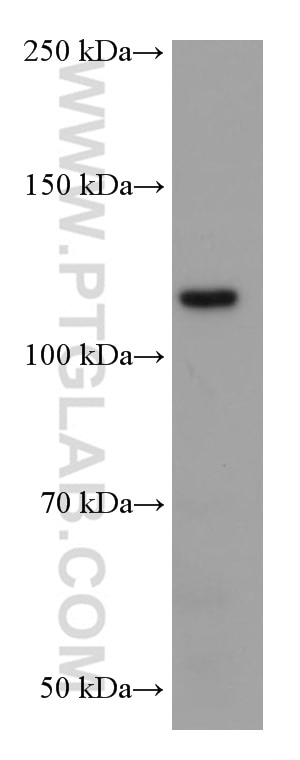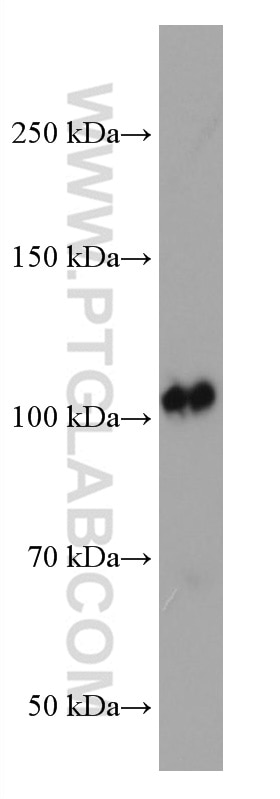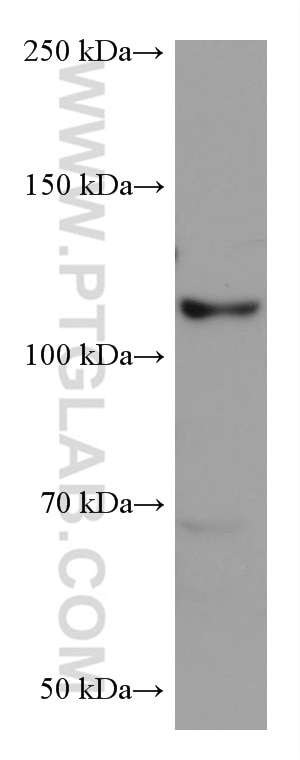Anticorps Monoclonal anti-EPHB1
EPHB1 Monoclonal Antibody for WB, ELISA
Hôte / Isotype
Mouse / IgG2b
Réactivité testée
Humain, souris et plus (1)
Applications
WB, ELISA
Conjugaison
Non conjugué
CloneNo.
1B7C12
N° de cat : 67080-1-Ig
Synonymes
Galerie de données de validation
Applications testées
| Résultats positifs en WB | tissu de cervelet de souris, tissu cérébral de souris, tissu cérébral humain fœtal |
Dilution recommandée
| Application | Dilution |
|---|---|
| Western Blot (WB) | WB : 1:1000-1:4000 |
| It is recommended that this reagent should be titrated in each testing system to obtain optimal results. | |
| Sample-dependent, check data in validation data gallery | |
Applications publiées
| WB | See 1 publications below |
Informations sur le produit
67080-1-Ig cible EPHB1 dans les applications de WB, ELISA et montre une réactivité avec des échantillons Humain, souris
| Réactivité | Humain, souris |
| Réactivité citée | rat |
| Hôte / Isotype | Mouse / IgG2b |
| Clonalité | Monoclonal |
| Type | Anticorps |
| Immunogène | EPHB1 Protéine recombinante Ag16347 |
| Nom complet | EPH receptor B1 |
| Masse moléculaire calculée | 984 aa, 110 kDa |
| Poids moléculaire observé | 110-120 kDa |
| Numéro d’acquisition GenBank | BC111744 |
| Symbole du gène | EPHB1 |
| Identification du gène (NCBI) | 2047 |
| Conjugaison | Non conjugué |
| Forme | Liquide |
| Méthode de purification | Purification par protéine A |
| Tampon de stockage | PBS with 0.02% sodium azide and 50% glycerol |
| Conditions de stockage | Stocker à -20 ℃. L'aliquotage n'est pas nécessaire pour le stockage à -20oC Les 20ul contiennent 0,1% de BSA. |
Informations générales
EPHB1, also named as EPHT2, NET, HEK6 and ELK, belongs to the protein kinase superfamily, Tyr protein kinase family, and Ephrin receptor subfamily. It is a receptor for members of the ephrin-B family. EPHB1 binds to ephrin-B1, -B2 and -B3. EPHB1 may be involved in cell-cell interactions in the nervous system. EPHB1 catalyzes the reaction: ATP + a [protein]-L-tyrosine = ADP + a [protein]-L-tyrosine phosphate.
Protocole
| Product Specific Protocols | |
|---|---|
| WB protocol for EPHB1 antibody 67080-1-Ig | Download protocol |
| Standard Protocols | |
|---|---|
| Click here to view our Standard Protocols |




